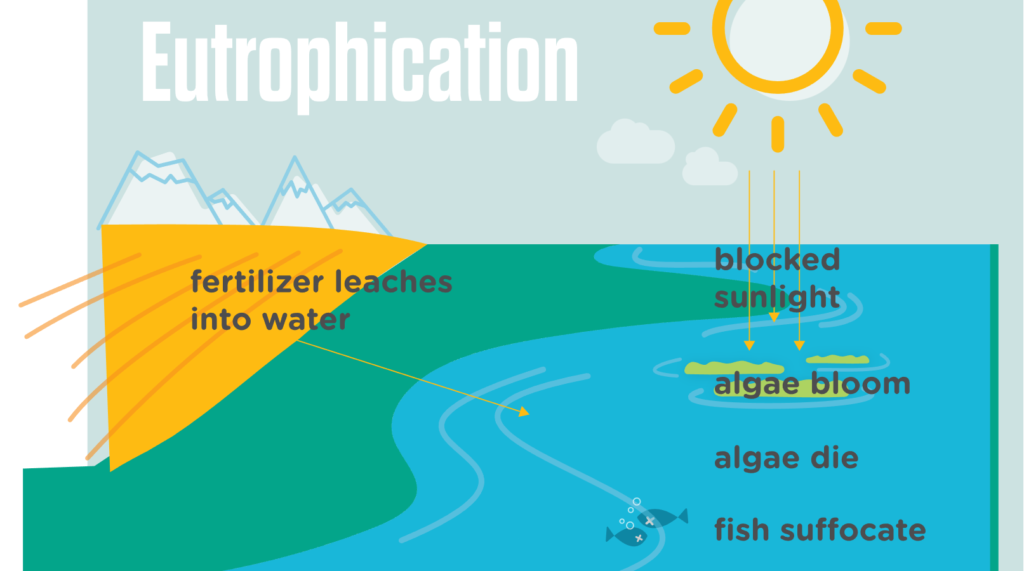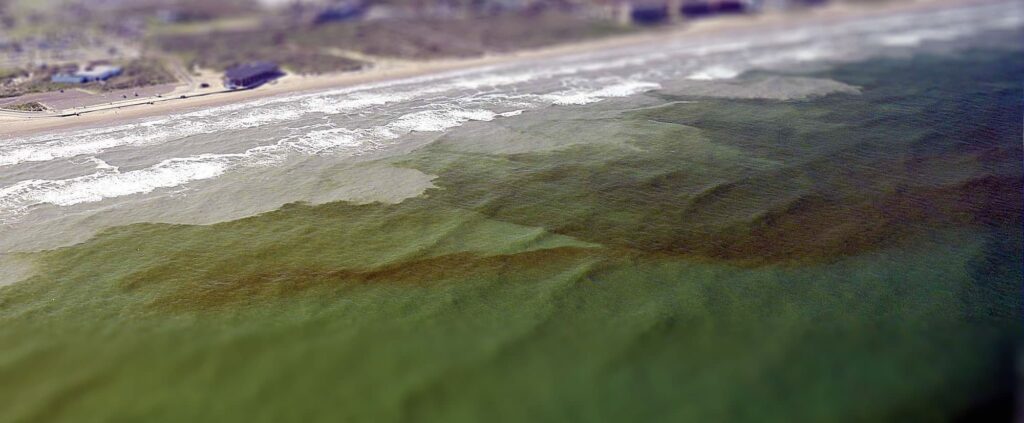Soil health and water quality are closely related. The condition of the soil affects the quality of the water that runs over or through it. Conversely, the quality of the water that runs over or through the soil affects soil health. Just as healthy soil promotes healthy water quality, unhealthy soil can degrade water quality. Yet, the effects of the soil-water relationship don’t end there.
In terms of agricultural practices, there are two main ways that soil health and water quality are related: nutrient cycling and soil structure. Chemical contamination with pesticides can also affect both soil and water, but we’ll examine that subject in a future article that will address the larger topic of industrial chemicals, including petroleum-based fertilizers.
Nutrient Cycling
Healthy soils are able to use and reuse carbon, nitrogen, and phosphorous more efficiently. This helps to maintain soil fertility and promote plant growth, but it also reduces nutrient runoff into bodies of water. That’s important for water quality because nutrient pollution, an overabundance of nutrients in water, can cause some algae to bloom and, during the algae’s death and decomposition, consume the oxygen that fish and other aquatic life need. This process is known as eutrophication, and it’s a big enough problem that it can lower the pH of seawater and make it more acidic. (Excessive acidity isn’t good for the soil either.)
According to the Ocean Service, which is part of the National Oceanic and Atmospheric Administration (NOAA), 65% of the estuaries and coastal waters in the contiguous United States are moderately to severely degraded by excessive nutrient inputs. In Florida, where Go Natural Education is based, runoff from industries like the state’s inland citrus and sugar cane crops is blamed for the growth of algae that produce toxins that kill fish and make shellfish dangerous to eat. The red tides that result aren’t just found in Florida, however; some algae blooms have been carried by the Gulf Stream into the Atlantic Ocean as far north as Delaware.
When soils are healthy and have an active and efficient nutrient cycling process, microorganisms like bacteria and fungi breakdown organic matter, releasing nutrients that plants absorb through their root systems. Plants also release nutrients to the soil when they decompose or are grazed by animals such as cows, which in turn deposit manure. When nutrient cycling is disrupted, such as by soil erosion, the overuse of chemical fertilizers, or by excessive concentrations of manure, these nutrients aren’t returned to other plants. Instead, they can run-off into nearby water and affect water quality.
Nutrient cycling in healthy soil isn’t just good for plants and marine life, however. Eutrophication in rivers, lakes, and other bodies of inland water can destroy wildlife habitats and interfere with water uses ranging from boating and recreation to the supply of safe drinking water. Nutrient runoff can also have negative effects on human health since excess nutrients that contaminate drinking water can cause problems such as gastrointestinal illness. Tragically, infants who have consumed formula reconstituted with nitrate-contaminated water have died, and the incidence of blue babies is well-documented.
Soil Structure
Soil structure also plays a key role in maintaining both water quality and soil health. The physical structure of soil affects how water moves over and through it, and how water is stored and filtered. Healthy soils have a porous structure that enables soil to absorb and retain water, something that plants and the microorganisms that support plants both need. According to College of Agricultural Sciences at Penn State, the ideal soil contains 50% solid material and 50% pore space. Yet, all pores aren’t the same.
In soil, there are two types of pores: micropores and macropores. Micropores hold available water for plant roots and macropores allow water to drain through while also allowing for air exchange. Plants need both air and water, which is why the root systems of grasses are aided by the aeration that a cow’s hooves provide. Too many hooves on a small plot of land can strip the grass, however, so rotational grazing is a sound agricultural practice not only for cows, but also for soil and water.
Whether it’s from improper agricultural practices, or from heavy bulldozers in summer to a lack of cover crops in winter, soils can become compacted and loose their porous structure. This prevents life-sustaining water from penetrating the soil and benefiting plants and microorganisms alike. Compacted soils also have less organic matter, which is important for nutrient cycling and the water quality that results. Compacted soils don’t just carry more nutrient runoff away, however. They also carry suspended sediments that can clog the gills of fish and other aquatic organisms.
Ultimately, soils with good structure can improve water quality by promoting the infiltration and storage of water. As water slowly percolates through the soil, contaminants are filtered out and runoff is reduced. The presence of organic matter in these soils also helps to absorb and retain water, improving soil structure and nutrient cycling. Soil health and water quality are closely related, and both are also related to the health of life ranging from grass and cows to fish, crops, and people.


